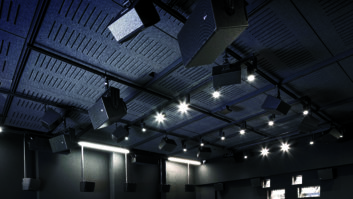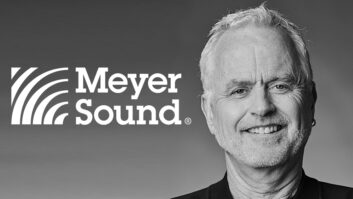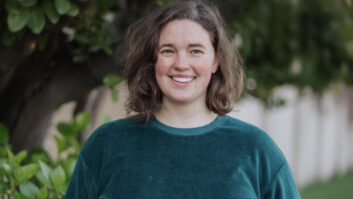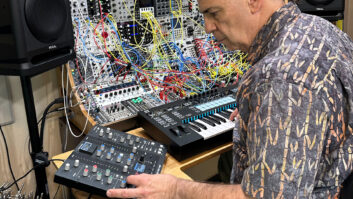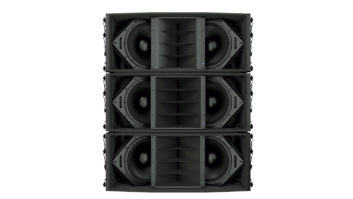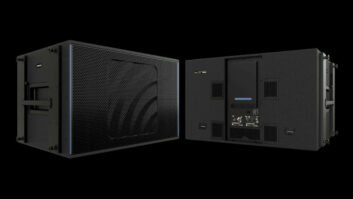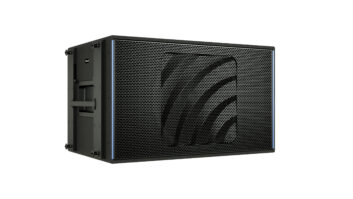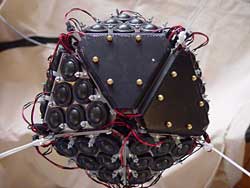
University of California Berkeley’s Center for New Music and Audio Technologies (CNMAT) is a hotbed of research into areas of music and sound technology as diverse as music languages and protocols, gestural controllers and new methods of radiating and spatializing sound. Meyer Sound’s longtime dedication to advanced research and the physical proximity of their facilities (Meyer Sound headquarters is barely two miles from CNMAT) were conditions that fostered an alliance between the two.
The relationship has encompassed several projects over a number of years, including an early VRAS variable room acoustic system experiment conducted by CNMAT, Meyer Sound and LCS Audio (now Meyer Sound’s LCS Series product line) at the Berkeley Repertory Theatre’s Meyer Sound–equipped Roda Theatre. CNMAT also developed the Open Sound Control (OSC) protocol recently implemented in Meyer Sound’s LCS Series Matrix3 digital audio system.
“Meyer Sound always wants to be looking ahead because you can’t advance science without doing that,” says John Meyer, Meyer Sound’s founder, president and CEO. “We do a lot of our own research, not all of which is strictly product-oriented, but it is often directed largely toward our near- and mid-term market needs. Our partnership with CNMAT gives us an opportunity to participate in research that is more far-reaching and may suggest entirely new directions for us to go in. We reap great benefits from the projects we work on with CNMAT and appreciate what they are doing.”
Currently, Meyer Sound is supporting a CNMAT effort to create a loudspeaker array capable of mimicking the kinds of radiation patterns exhibited by acoustical musical instruments. That project is the subject of a paper titled “A Compact 120 Independent Element Spherical Loudspeaker Array With Programmable Radiation Patterns” that the CNMAT group presented at the recent Audio Engineering Society (AES) convention in Paris.
CNMAT director David Wessels says, “It is exceedingly rare to find a company that values, much less supports, early stage research. Commercial partners are vital to getting our work out into the world, where our research can be brought to fruition in new products. We are fortunate to be associated with Meyer Sound, which is one of the few companies to fully understand how working with us strengthens their future as much as it does ours. We get to combine our expertise with theirs and consult with the likes of John and Perrin Meyer. The synergy really is exciting for both of us.”
The principle being investigated in the loudspeaker array project has to do with the ways that acoustical instruments radiate sound very different from standard loudspeaker arrays. The radiation pattern of instruments varies with frequency and is different for each instrument. In contrast, loudspeakers are typically designed to opposite goals: They are intended to be as free as possible from having an identifiable sonic character or exhibiting variations with frequency and should be completely consistent from unit to unit. The difference between instrument behavior and that of existing loudspeaker arrays becomes glaringly obvious in musical situations encompassing acoustic and electronic instruments, where the sounds usually do not blend smoothly.
The CNMAT project seeks to create a compact loudspeaker array that resides in a single location and has a radiation pattern controlled by onboard DSP. After initial experiments that simply combined existing commercial self-powered loudspeakers into a tight cubic array, research turned to creating spherical prototypes. The most recent prototype, which is reported on in the AES paper, is a 10-inch-diameter icosahedron incorporating 120 1.25-inch drivers developed by Meyer, each driven from a separate audio channel, plus circuit boards for all of the control and Class-D amplification functions. The array is controlled through Gigabit Ethernet.
Wave field synthesis is currently a hot research topic; however, the majority of research has been focused on transducers composed of multiple transducers in planar arrays. This spherical loudspeaker is unique in that it’s a tightly packed spherical array, making it possible to create three-dimensional wave fields using WFS. Both planar and spherical loudspeakers have interesting possibilities for future enhancements, including early reverberation enhancement.
Research related to the project was presented by CNMAT researcher Peter Kassakian to an IEEE International Conference on acoustics, speech and signal processing last year, as well as in papers presented to two earlier AES conventions. In addition to Meyer Sound, support for the project has come through a UC Discovery Grant from the Industry-University Cooperative Research Program (IUCRP), which forms partnerships tying together the University of California, industry sponsors and the State of California.
“Our mission is to break new ground and discover how the technologies we create can be made useful,” says CNMAT research director Adrian Freed. “The spherical loudspeaker array project is a new approach to sound reproduction that we feel could have potent applications for room acousticians, musicians and the research community, just for a start. It’s really a thrill to do this work, but we are acutely aware that pure research can only happen with support, and want to express our gratitude to Meyer Sound, the IUCRP and, of course, the University of California for believing in what we’re doing enough to invest themselves in it. We think it will end up being a good investment for everyone, and we get to have a lot of fun opening a new world in the process.”
For more information on CNMAT and the spherical loudspeaker array project, see visit www.cnmat.berkeley.edu. For more information on Meyer Sound, visit www.meyersound.com.
